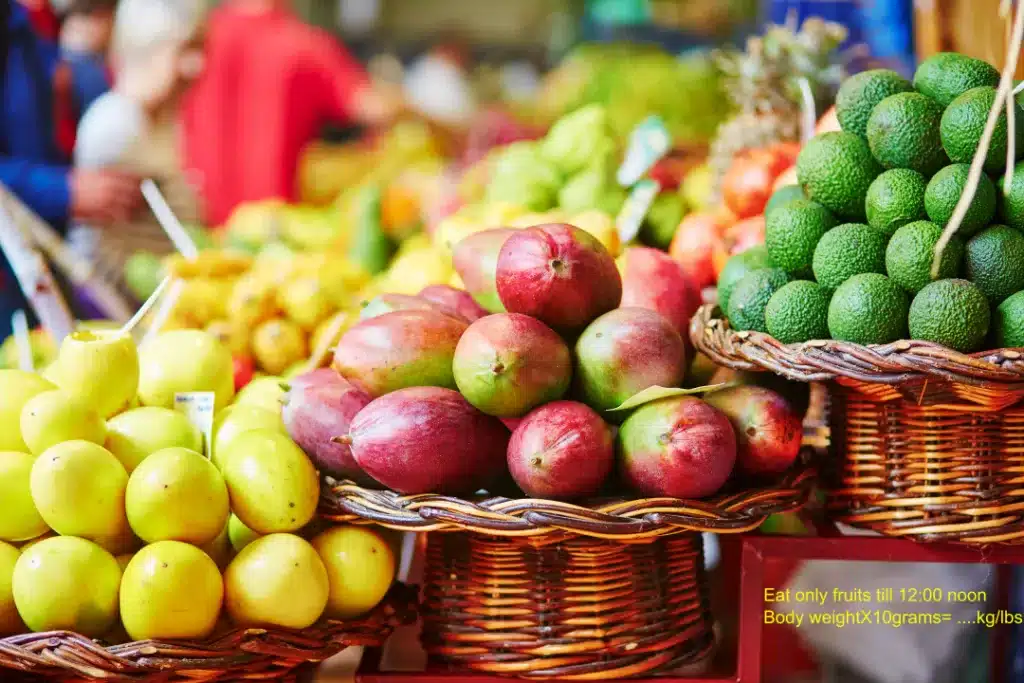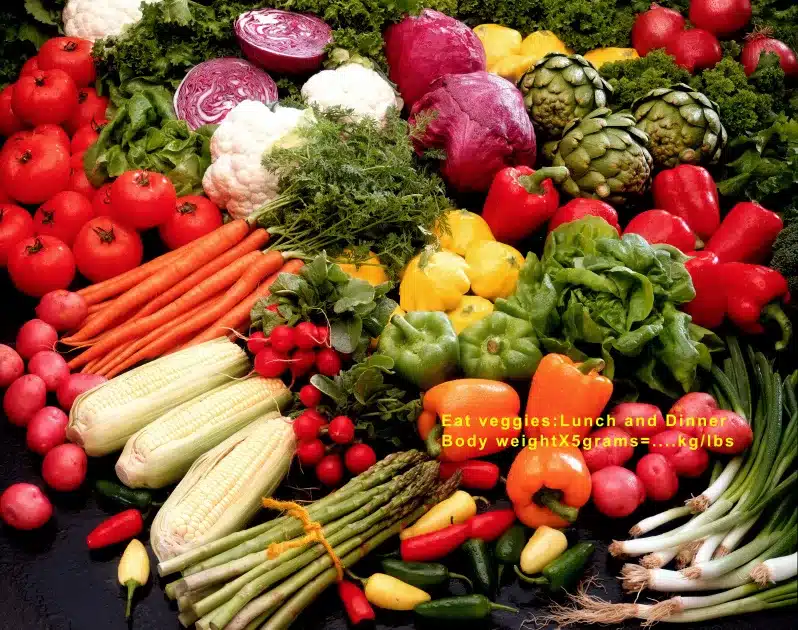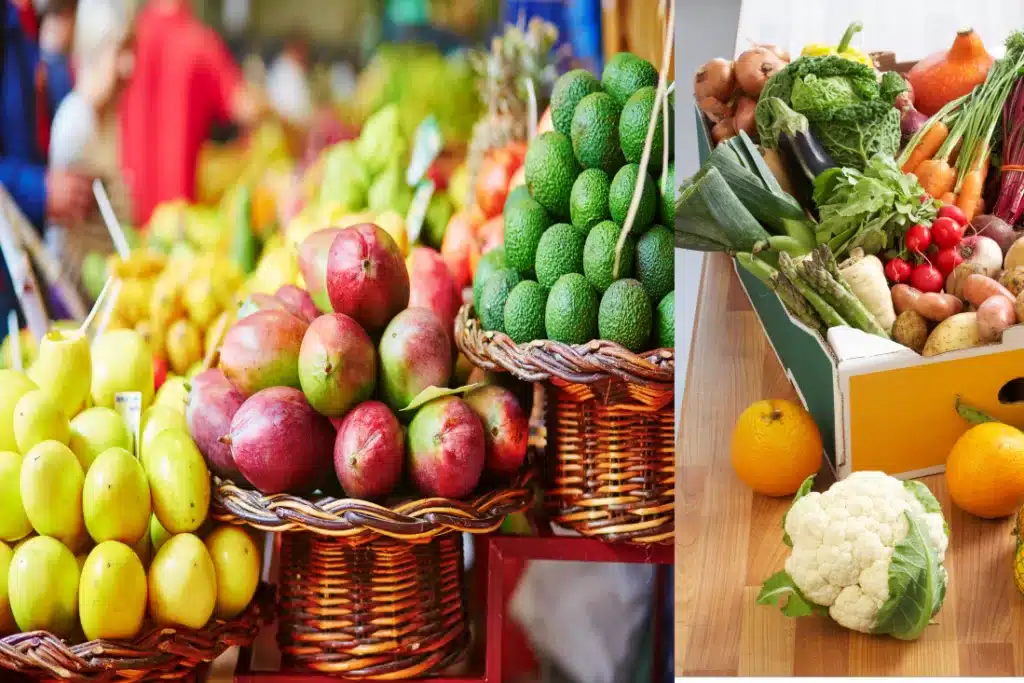Unlocking the Hidden Potential of Fruits and Vegetables
In the pursuit of a healthier lifestyle, one cannot underestimate the importance of incorporating a diverse range of fruits and vegetables into their diet.
The benefits of this dietary choice are manifold, spanning from improved overall well-being to longevity.
 harvest health
harvest health
In our fast-paced lives, where time is a luxury, maintaining a balanced and healthy diet can often seem like a discouraging task.
However, there are simple yet effective steps that you can incorporate into your daily routine to embark on a journey towards a healthier lifestyle and stimulate your mind with “mind snacks.”
One such approach, the “DIP diet” (Disciplined & Intelligent Person’s Diet), a unique dietary strategy that can help you revitalize your well-being. In this article, we’ll explore this method, breaking it down step by step, and uncover its potential benefits.
Step 1: Embrace the Morning Fruit Ritual
Eat Only Fruits Till 12:00 noon
Starting your day with a burst of natural sweetness can set the tone for a healthier lifestyle. The first step in the DIP is to consume only fruits exclusively until noon.

The Fruit Equation
You might be wondering, “How many fruits should I eat?” Well, it’s simple. Aim to eat 3-4 types of fruits, the combined weight of which should be equal to your body weight multiplied by 10 grams. For an example: if you body weight is 70KG, you should consume (70KGX10grams) =700grams or 1.5lbs.
Step 2: The Power of Two Plates
Always Eat Your Lunch/Dinner in 2 Plates
The 2-Plate Method brings structure and balance to your meals. It encourages portion control and diversifies your nutrient intake.
Plate 1 – A Colorful Array of Raw Vegetables

The first plate is dedicated to raw vegetables, creating a vibrant and nutrient-rich foundation for your meal. The quantity should equal your body weight multiplied by 5 grams. For an example: if your body weight is 70Kg, you should consume (70kgX5grams) = 350grams or 0.770lbs in lunch and dinner.
Plate 2 – Homely Cooked Delights
Plate 2 is reserved for delicious, homely cooked vegetarian food. Keep salt and oil to a minimum, focusing on flavors and health.
The Sequence Matters
To maximize the benefits of the 2-Plate Method, follow this sequence: start with plate 1, savoring the raw vegetables, and then proceed to plate 2.
Step 3: Timing is Everything
Try to Finish Dinner by 7 pm
A key element of this method is adhering to specific meal timings. Dinner should ideally be concluded by 7 pm.
As we’ve discussed the “DIP” Method step by step, let’s dig into the reasons why this approach can be a game-changer for your health and well-being.
The Benefits of the 2-Plate Method
Balancing Nutrient Intake
By dedicating a plate to raw vegetables and another to cooked food, you strike a balance between essential nutrients and maintain portion control.
Weight Management
The method’s calculated fruit intake and structured mealtime can support weight management and aid in shedding excess pounds.
Enhanced Digestion
Raw vegetables are a great source of dietary fiber, which promotes healthy digestion, reduces bloating, and prevents constipation.
Regulated Blood Sugar
The gradual intake of fruits throughout the morning can help stabilize blood sugar levels, reducing energy spikes and crashes.
Improved Sleep Quality
Ending your dinner by 7 pm allows your body ample time to digest food before bedtime, potentially improving sleep quality.
Enhanced Energy Levels
Balanced nutrient intake and structured mealtimes can lead to sustained energy levels throughout the day.
Better Hydration
Fruits and vegetables with high water content contribute to overall hydration.
Incorporating the “DIP Method” into your daily routine can be a transformative experience, leading to improved health and well-being. However, like any dietary change, it’s essential to consult with a healthcare professional or Nutritionist before making significant alterations to your eating habits.
The “DIP” Method simplifies the path to a healthier life. By starting your day with fruits, embracing a two-plate meal structure, and adhering to timely dinners, you can unlock the potential of a more balanced and energetic lifestyle. Remember that consistency is key, and gradual changes yield the best results.
When and How to Eat Fruits and Vegetables?

In this section, we provide practical advice on when and how to consume fruits and vegetables for maximum benefit.
- Timing Matters: It’s important to incorporate fruits and veggies into your daily routine throughout the day. Include them in your breakfast, snacks, and main meals to ensure you receive a wide range of nutrients.
- Fresh is Best: While frozen and canned options are convenient, fresh produce often retains more nutrients. Whenever possible, choose fresh fruits and vegetables.
- Raw or Cooked: Both raw and cooked fruits and vegetables have their advantages. Some nutrients are more accessible when cooked, while others are best consumed raw. A balanced combination of both in your diet ensures you receive a variety of nutrients.
- Pair with Protein: To create well-rounded, satisfying meals, consider combining fruits and vegetables with protein sources like lean meats, fish, or plant-based proteins.
Fruits and vegetables offer a wide range of health benefits due to their rich nutrient content and natural goodness. Here are some of the key benefits of including them in your diet:
- Rich in Vitamins and Minerals:
- Fruits and vegetables are abundant sources of essential vitamins and minerals, including vitamin C, vitamin A, potassium, folate, vitamin K, and many others.
- Vitamin C is crucial for immune system support, collagen production, and wound healing.
- Vitamin A plays a vital role in maintaining healthy skin, vision, and the proper functioning of organs like the heart and lungs.
- Potassium helps regulate blood pressure and fluid balance in the body.
- Folate is important for DNA synthesis and cell growth.
- High in Dietary Fiber:
- Dietary fiber is found in the cell walls of plants and is primarily present in fruits, vegetables, grains, and legumes.
- Fiber aids in digestion by promoting regular bowel movements and preventing constipation.
- It can help maintain a healthy weight by increasing feelings of fullness and reducing overall calorie intake.
- Soluble fiber can help lower cholesterol levels and regulate blood sugar levels.
- Antioxidant Properties:
- Antioxidants are compounds that help protect cells from oxidative stress and damage caused by free radicals.
- Common antioxidants in fruits and vegetables include flavonoids, carotenoids (e.g., beta-carotene), and vitamin C.
- Antioxidants are associated with a reduced risk of chronic diseases, including cancer, heart disease, and neurodegenerative conditions.
- Low in Calories and Fat:
- Most fruits and vegetables are naturally low in calories and fat, making them ideal choices for those looking to manage their weight.
- They provide essential nutrients without adding excess calories to your diet.
- Incorporating them into meals can help create a balanced and nutritious eating plan.
- Hydration:
- Many fruits and vegetables have a high-water content, which can contribute to your daily hydration needs.
- Proper hydration is essential for maintaining bodily functions, including temperature regulation, digestion, and circulation.
- Water-rich foods can be particularly refreshing and hydrating, especially during hot weather.
- Disease Prevention:
- The consumption of a diet rich in fruits and vegetables is associated with a reduced risk of various chronic diseases.
- High-fiber diets can help lower the risk of heart disease, stroke, and type 2 diabetes.
- The antioxidants in these foods may help protect against cancer by neutralizing harmful free radicals.
- Improved Digestive Health:
- Fiber in fruits and vegetables adds bulk to stool, aiding in regular bowel movements and preventing constipation.
- Fiber also serves as a prebiotic, supporting the growth of beneficial gut bacteria, which can have a positive impact on digestive health.
- Skin Health:
- Vitamins like vitamin C and vitamin A in fruits and vegetables contribute to healthy, radiant skin.
- Antioxidants protect the skin from damage caused by UV rays and environmental factors.
- Proper hydration from water-rich fruits and vegetables can help maintain skin elasticity and moisture.
- Eye Health:
- Certain fruits and vegetables, such as carrots, spinach, and sweet potatoes, contain nutrients like beta-carotene and lutein, which are essential for maintaining good vision and reducing the risk of age-related eye conditions like macular degeneration.
- Natural Energy Boost:
- The natural sugars found in fruits, such as fructose, provide a quick source of energy.
- Fiber in fruits helps sustain energy levels by regulating blood sugar and preventing energy crashes.
- Improved Mood:
- Some fruits and vegetables contain compounds that may have mood-enhancing effects.
- For example, bananas contain tryptophan, which can promote the production of serotonin, a neurotransmitter associated with mood regulation.
- Weight Management:
- Fruits and vegetables are nutrient-dense, meaning they provide essential nutrients for relatively few calories.
- Incorporating them into your diet can help you feel full and satisfied, making it easier to manage your weight by controlling portion sizes and overall calorie intake.
- Better Heart Health:
- High-fiber diets with plenty of fruits and vegetables can help lower blood pressure and reduce the risk of heart disease by improving cholesterol levels and supporting healthy blood vessel function.
- Bone Health:
- Vegetables like broccoli and kale are rich in calcium and vitamin K, both of which are crucial for maintaining strong bones and reducing the risk of osteoporosis.
- Aid in Detoxification:
- Certain vegetables, especially cruciferous ones like broccoli and cauliflower, contain compounds that support the body’s natural detoxification processes by assisting in the breakdown and elimination of toxins.
Incorporating a variety of colorful fruits and vegetables into your daily diet can provide these numerous health benefits, contributing to overall well-being and vitality. Remember to enjoy a diverse range of fruits and vegetables to ensure you receive a broad spectrum of nutrients.
What Kinds of Fruits and Veggies to Add?

Incorporating a variety of fruits and vegetables into your diet can provide a wide range of essential nutrients and health benefits. Here is a list of fruits and vegetables to consider adding to your diet:
Fruits:
- Apples:
- Nutrition: Apples are a good source of dietary fiber, vitamin C, and various antioxidants. They also contain small amounts of vitamins A and B.
- Health Benefits: Apples are known for their ability to support digestive health due to their fiber content. They may help lower the risk of heart disease and contribute to weight management when included in a balanced diet.
- Bananas:
- Nutrition: Bananas are rich in potassium, vitamin C, vitamin B6, and dietary fiber.
- Health Benefits: The high potassium content in bananas helps regulate blood pressure. They are a convenient, energy-boosting snack and can aid in digestion due to their fiber content.
- Berries (e.g., strawberries, blueberries, raspberries):
- Nutrition: Berries are packed with antioxidants, vitamin C, fiber, and various vitamins and minerals.
- Health Benefits: Antioxidants in berries help combat oxidative stress and inflammation. They are known to support brain health, boost the immune system, and promote heart health.
- Oranges:
- Nutrition: Oranges are famous for their high vitamin C content, and they also provide dietary fiber and vitamins like vitamin A and vitamin B.
- Health Benefits: Vitamin C in oranges is essential for immune support and skin health. The fiber aids digestion, and the antioxidants help protect cells from damage.
- Kiwi:
- Nutrition: Kiwi is a vitamin C powerhouse and also contains vitamin K, vitamin E, dietary fiber, and antioxidants.
- Health Benefits: Kiwi’s high vitamin C content boosts the immune system and supports healthy skin. It also contributes to blood clotting and bone health due to its vitamin K content.
- Grapes:
- Nutrition: Grapes contain antioxidants like resveratrol, as well as vitamins C and K, dietary fiber, and minerals.
- Health Benefits: Resveratrol has been associated with heart health benefits. Grapes are also hydrating and support skin health.
- Mangoes:
- Nutrition: Mangoes are rich in vitamins A and C, as well as dietary fiber.
- Health Benefits: Vitamin A in mangoes is essential for vision and skin health. The vitamin C content supports immune function and collagen production for healthy skin.
- Pineapples:
- Nutrition: Pineapples contain vitamin C, vitamin B6, dietary fiber, and the enzyme bromelain.
- Health Benefits: Bromelain aids digestion and reduces inflammation. Pineapples are also a good source of antioxidants and can support immune health.
- Pears:
- Nutrition: Pears are high in dietary fiber, vitamin C, and vitamin K.
- Health Benefits: The fiber in pears supports digestive health and may help control blood sugar levels. They also provide vitamin K for bone health.
- Watermelon:
- Nutrition: Watermelon is mostly water but contains vitamins A and C.
- Health Benefits: Watermelon is incredibly hydrating, making it a great choice in hot weather. It also provides antioxidants and supports overall hydration.
Vegetables:
- Broccoli:
- Nutrition: Broccoli is rich in vitamins C and K, fiber, folate, and various antioxidants.
- Health Benefits: Broccoli’s nutrients support bone health, immune function, and may reduce the risk of certain cancers.
- Spinach:
- Nutrition: Spinach is a powerhouse of nutrients, including iron, calcium, vitamins A and K, and antioxidants.
- Health Benefits: Spinach supports strong bones, healthy skin, and may improve eye health due to its high vitamin A content.
- Carrots:
- Nutrition: Carrots are packed with beta-carotene, vitamins A and K, and dietary fiber.
- Health Benefits: Beta-carotene promotes good vision and skin health. Carrots also contribute to digestion and provide antioxidants.
- Bell Peppers:
- Nutrition: Bell peppers, especially red ones, are high in vitamin C and antioxidants.
- Health Benefits: Vitamin C supports the immune system and skin health. Antioxidants help protect cells from damage and reduce inflammation.
- Tomatoes:
- Nutrition: Tomatoes are rich in lycopene, vitamin C, vitamin K, and dietary fiber.
- Health Benefits: Lycopene is a powerful antioxidant associated with heart health and reducing the risk of certain cancers.
- Cucumbers:
- Nutrition: Cucumbers are low in calories and primarily composed of water, making them hydrating. They also provide some vitamin K and antioxidants.
- Health Benefits: Cucumbers support hydration and skin health. Their antioxidants contribute to overall well-being.
- Sweet Potatoes:
- Nutrition: Sweet potatoes are high in vitamins A and C, dietary fiber, and potassium.
- Health Benefits: Vitamins A and C support immune function and skin health. Sweet potatoes are also good for maintaining healthy blood pressure.
- Kale:
- Nutrition: Kale is a leafy green rich in vitamins A, C, and K, as well as fiber, calcium, and antioxidants.
- Health Benefits: Kale’s nutrients support bone health, immune function, and may reduce the risk of chronic diseases.
- Zucchini:
- Nutrition: Zucchini is low in calories and a source of vitamins C and K, as well as dietary fiber.
- Health Benefits: Zucchini’s fiber aids digestion, and its vitamins contribute to overall health.
- Brussels Sprouts:
- Nutrition: Brussels sprouts are packed with fiber, vitamins C and K, and antioxidants.
- Health Benefits: Their nutrients support bone health, immune function, and may reduce inflammation.
Incorporating a wide variety of these fruits and vegetables into your diet can provide a wealth of nutrients and health benefits. Remember that a colorful and diverse plate often indicates a diet rich in different beneficial compounds, supporting overall well-being and vitality.
More Benefits for Kids and Youngsters
Promoting the consumption of fruits and vegetables among children and young adults is crucial for their growth and development. This section highlights the positive impact of these foods on youngsters’ health, academic performance, and long-term eating habits.
- Nutrient-Rich Growth:
- Children and young adults undergo significant physical and mental growth and development. Fruits and vegetables are rich in essential nutrients like vitamins, minerals, and antioxidants, which are crucial for healthy growth.
- Nutrients like calcium, vitamin D, and vitamin K from vegetables can support the development of strong bones and teeth.
- Immune Support:
- Fruits such as citrus fruits (oranges, grapefruits) and berries are packed with vitamin C, which plays a vital role in boosting the immune system.
- A strong immune system is particularly important for kids and young adults as it helps protect against common infections.
- Cognitive Function:
- Antioxidant-rich fruits and vegetables, including berries, spinach, and broccoli, have been associated with improved cognitive function and memory.
- These benefits can be especially helpful for young people during their academic and learning years.
- Healthy Snacking:
- Fruits and vegetables make excellent snacks. Providing kids with these options instead of sugary or high-calorie snacks can promote healthy eating habits from a young age.
- Snacking on fruits and vegetables can help maintain steady energy levels and prevent energy crashes.
- Fiber for Digestive Health:
- High-fiber fruits and vegetables, such as apples, pears, and leafy greens, support digestive health and regular bowel movements.
- Fiber also helps prevent constipation, which can be common in children.
- Hydration:
- Many fruits and vegetables have a high-water content, helping to keep kids and young adults properly hydrated, especially during physical activities and hot weather.
- Reduced Risk of Childhood Obesity:
- Incorporating fruits and vegetables into meals can contribute to a balanced diet and help maintain a healthy weight.
- Reducing the risk of childhood obesity is essential for preventing long-term health issues.
- Taste Development:
- Introducing a variety of fruits and vegetables to children from a young age can help develop their palate and encourage them to enjoy a wide range of foods.
- Exposure to different flavors and textures can lead to a lifelong appreciation for healthy eating.
- Dental Health:
- Crunchy fruits and vegetables, like apples and carrots, can help clean teeth and gums, reducing the risk of cavities.
- Encouraging kids to snack on these foods can support good dental hygiene.
In summary, the benefits of fruits and vegetables for children and young adults are numerous and encompass aspects of growth, immunity, cognitive development, healthy snacking habits, and overall well-being. Encouraging a diet rich in these foods from an early age sets the foundation for a lifetime of good health.
In conclusion, embracing the “DIP” method and incorporating a diverse range of fruits and vegetables into your daily routine can be a transformative journey towards “harvest health.” This approach offers numerous benefits, from improved digestion and weight management to enhanced energy levels and overall well-being. By making mindful dietary choices, you can unlock the potential of a more balanced and vibrant lifestyle.
Can I lose weight by eating fruits and vegetables only?
Yes, you can lose weight by primarily consuming fruits and vegetables, as they are low in calories and high in fiber, which can help control appetite and promote weight loss. However, a balanced diet that includes a variety of food groups is generally recommended for long-term health and nutrition. Consult with a healthcare professional or a nutritionist for personalized advice on weight loss and nutrition.
What are the benefits of fruits and veggies in the diet?
Here are the benefits of fruits and veggies in brief: they are nutrient-rich, high in fiber, rich in antioxidants, promote hydration, aid in weight management, support heart health, enhance skin health.
How do I know if I not eating enough fruits and vegetables?
You may not be eating enough vegetables if you experiences: Infrequent bowel movements, low energy levels and fatigue, frequent illnesses or weakened immune system, poor skin complexion and health, difficulty maintaining a healthy weight, nutrient deficiencies.